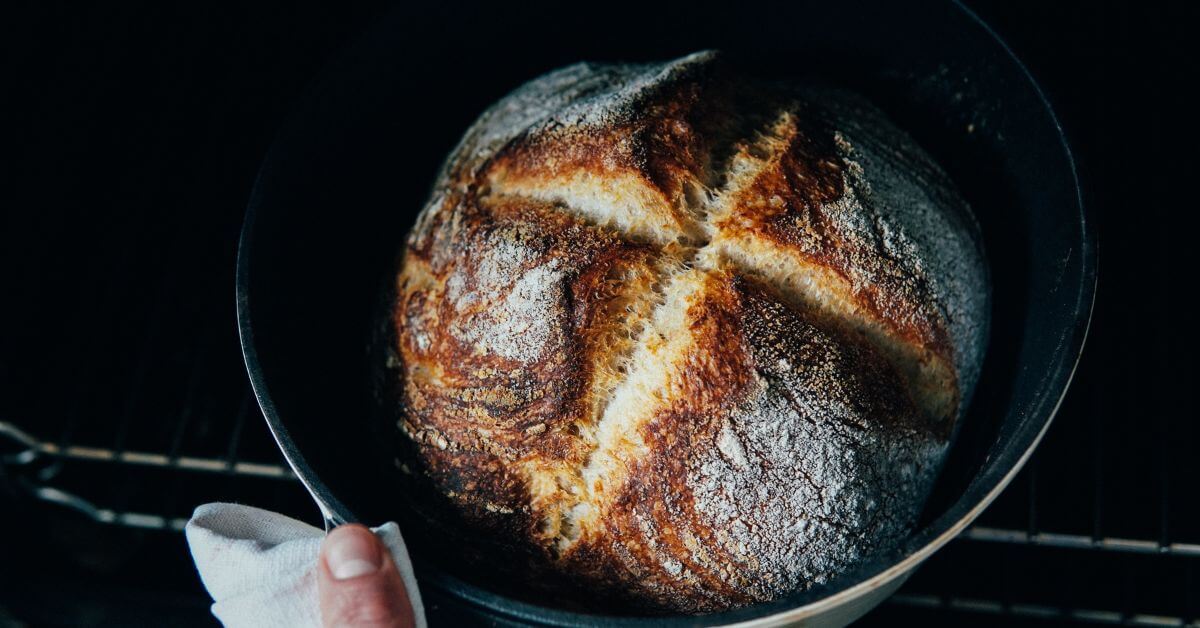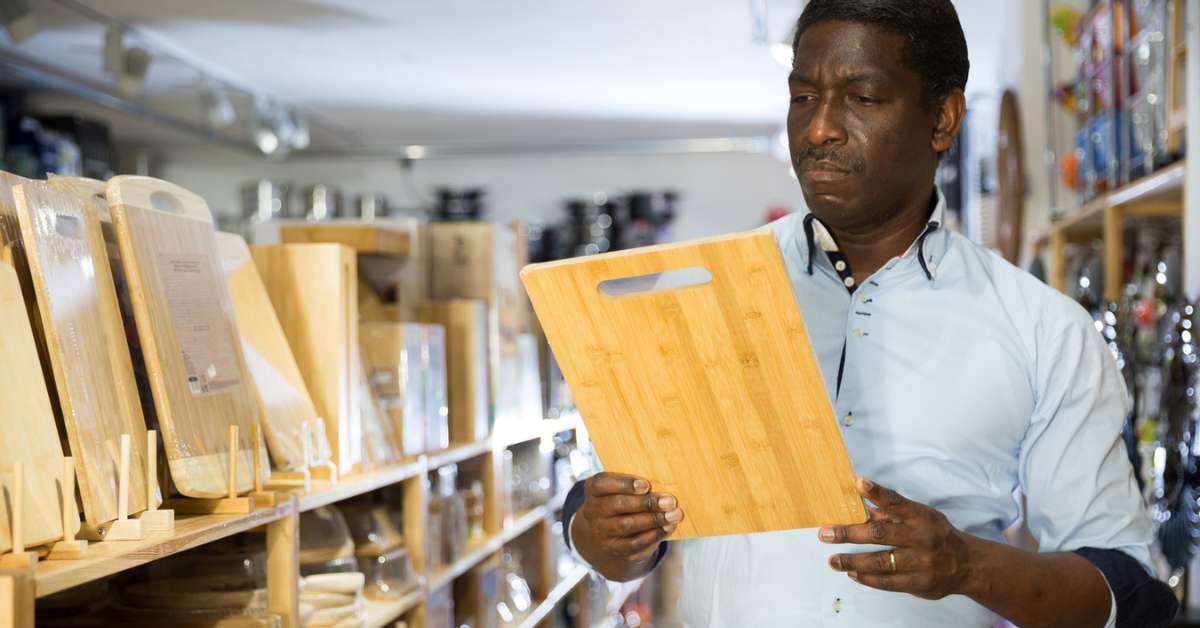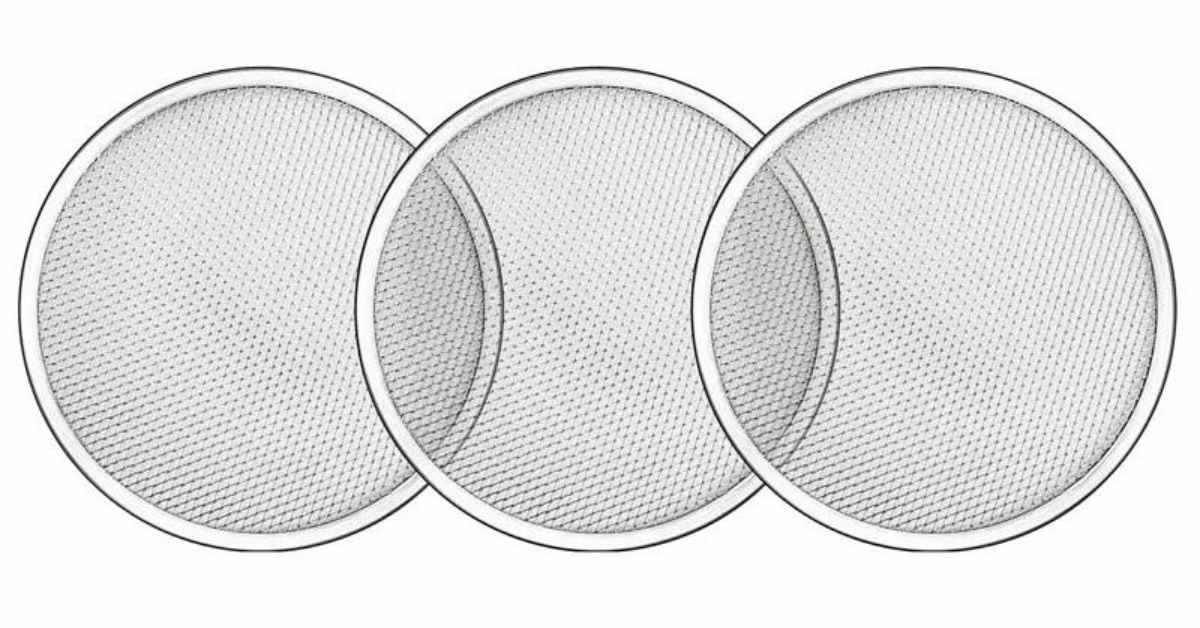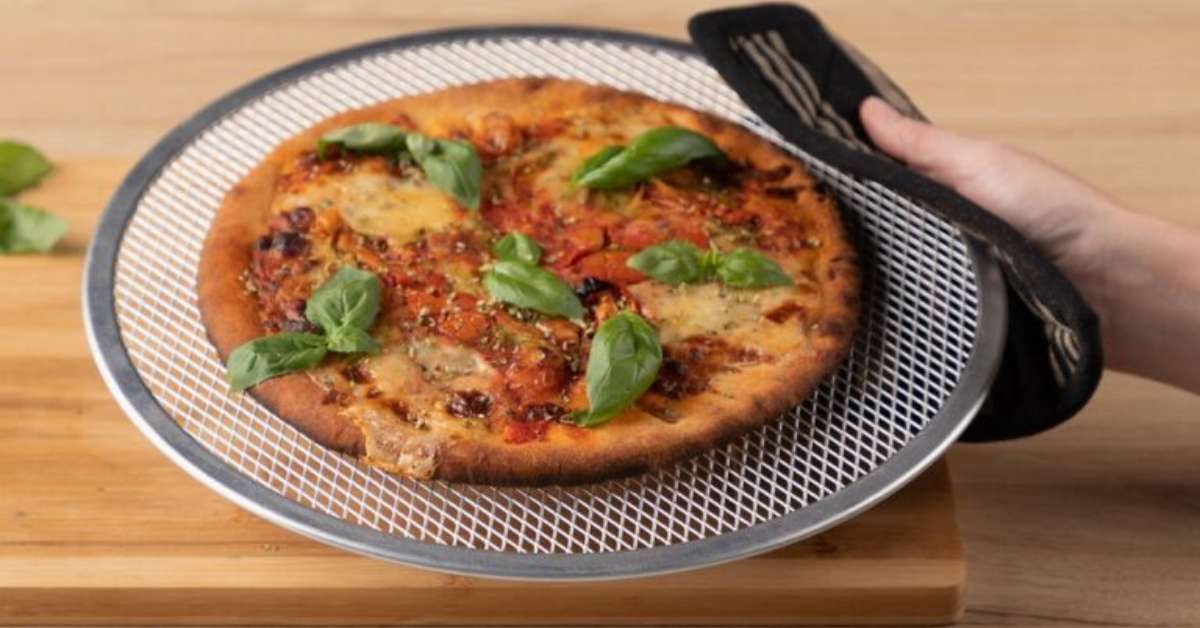Bread baking can be a delightful and rewarding experience, but it’s not without its challenges. One common issue many bakers face is bread stuck to Dutch oven during baking.
Not only can this be frustrating, but it can also ruin the bread that you’ve worked so hard to prepare. However, fear not! Several solutions to this problem can save your bread and your Dutch oven.
In this article, we’ll explore the causes of this issue and provide practical tips and tricks to prevent the bread from sticking to your Dutch oven. So, let’s get started!
Table of Contents
ToggleWhy is my Bread Stuck to Dutch Oven
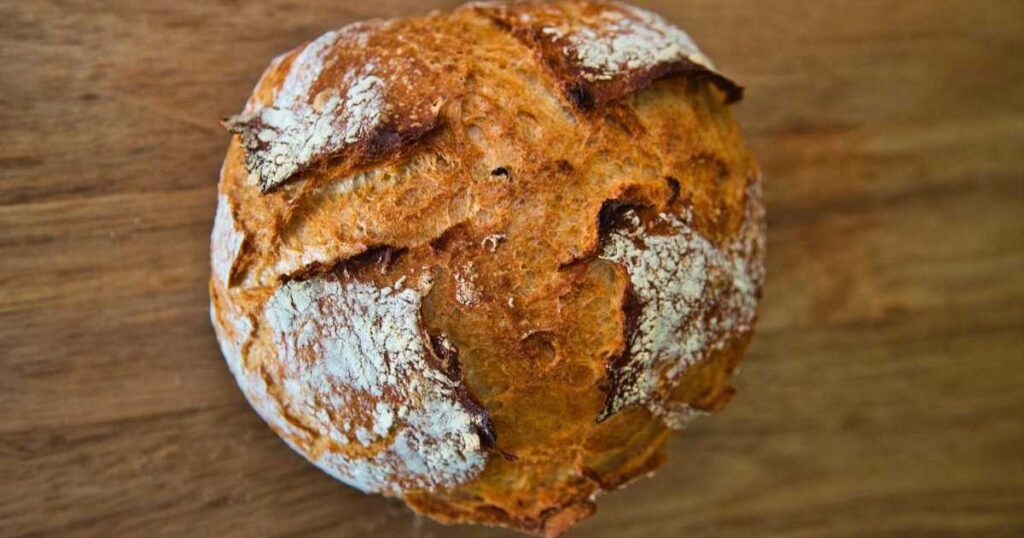
Dutch ovens are versatile and popular cooking vessels commonly used for baking bread. They are typically cast iron or ceramic, known for their excellent heat retention properties. However, these same properties can cause bread to stick to the surface of the Dutch oven during the baking process.
When the dough is placed inside the preheated Dutch oven, it can create steam that causes the dough to expand and stick to the sides of the pot. The high temperatures inside the Dutch oven can cause the bread to caramelize and adhere to the surface.
To prevent the bread from sticking to your Dutch oven, it’s essential to prepare the pot’s surface properly, use parchment paper or a non-stick spray, and adjust the baking time and temperature accordingly. You can enjoy delicious and perfectly baked bread without any sticking issues with the proper techniques and precautions.
How to Remove Stuck Bread From a Dutch Oven
Reasons for Removing the Bread
If you’ve ever had bread stuck to your Dutch oven, you know how frustrating it can be. Sometimes, the bread may be salvageable, but other times it may be beyond repair. Removing the stuck bread from the Dutch oven is vital to avoid damage to the pot and ensure it’s ready for future baking.
How to Safely Remove the Bread
When removing stuck bread from a Dutch oven, it’s essential to do so safely to avoid any injury or damage to the pot. One effective method is to let the Dutch oven cool completely, then use a spatula or butter knife to carefully loosen the bread from the sides and bottom of the pot. If the bread is particularly stubborn, try soaking the jar in warm water for a few minutes to help loosen the dough.
Tips for Preventing Damage
While removing stuck bread from a Dutch oven may be necessary, taking precautions to prevent any damage to the pot during the process is essential. Avoid using abrasive materials or tools that can scratch the pot’s surface, and be gentle when loosening the bread to avoid dents or chips. By taking these simple steps, you can safely remove stuck bread from your Dutch oven without causing any damage to the pot.
How to Clean a Dutch Oven After Bread Sticks
Cleaning a Dutch oven after bread sticks requires a thorough cleaning process to remove any leftover dough or residue from the pot’s surface. This process involves using a combination of heat, water, and gentle scrubbing to remove the stuck bread and any debris.
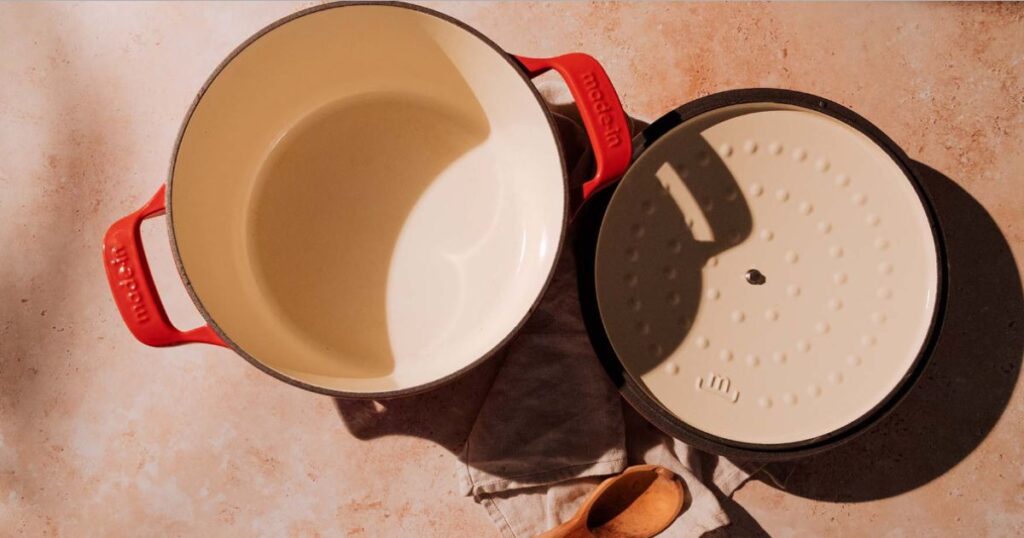
Materials Needed for Cleaning
To clean a Dutch oven after bread sticks, you will need the following materials:
- Hot water
- Dish soap
- Soft sponge or brush
- Plastic scraper or spatula
- Baking soda (optional)
Detailed Cleaning Steps
Here are the steps to the cleaning process:
- Let the Dutch oven cool completely before cleaning.
- Using a plastic scraper or spatula, gently remove any large pieces of dough from the pot’s surface.
- Fill the Dutch oven with hot water and add a small amount of dish soap.
- Let the pool soak for at least 30 minutes to loosen any remaining residue.
- Use a soft sponge or brush to gently scrub the pot’s surface, particularly to areas where the bread was stuck.
- Rinse the Dutch oven thoroughly with hot water to remove any soap residue.
- If necessary, sprinkle baking soda on the pot’s surface and scrub gently to remove any stubborn stains or residue.
- Rinse the jar again with hot water and dry it thoroughly.
Tips for Preventing Future Sticking
To prevent the bread from sticking in the future, try the following tips:
- Preheat the Dutch oven before adding the dough.
- Use parchment paper or a non-stick spray to prevent sticking.
- Reduce the baking temperature slightly and extend the baking time.
- Avoid using too much flour on the surface of the dough.
- Clean the Dutch oven thoroughly after each use to prevent any residue buildup.
How to Restore a Dutch Oven After Damage
If your Dutch oven has been damaged due to bread sticking or other reasons, it’s crucial to assess the damage and take appropriate steps to restore the pot to working condition.
Several types of damage can occur to a Dutch oven, including:
- Scratches or chips in the surface
- Burn marks or discolouration
- Warping or deformation
- Cracks or other structural damage
How to Assess the Extent of the Damage
Before attempting to restore a damaged Dutch oven, it’s essential to assess the extent of the damage. This can help you determine whether the pot is still safe to use and what steps to take to restore it. To assess the damage, try the following:
- Inspect the pot’s surface for scratches, chips, or burn marks.
- Check the bottom of the pool for warping or deformation.
- Fill the pot with water and check for leaks or cracks.
Tips for Restoring the Dutch Oven to Working Condition
Try the following tips to restore it to working condition:
- Use a food-safe enamel repair kit to fill the damaged area for minor scratches or chips.
- For burn marks or discolouration, use a gentle abrasive cleaner or baking soda to remove the stains.
- For warping or deformation, try gently reshaping the pot by pressing it back into shape while it’s still warm.
- For cracks or other structural damage, it’s best to retire the pot and replace it with a new one.
By following these tips, you can help restore your Dutch oven to working condition and ensure that it continues to serve you well in the kitchen.
Alternative Baking Methods to Avoid Bread Sticking
If you’re tired of dealing with bread sticking to your Dutch oven, you can try several alternative baking methods.
Some alternative baking methods to consider include:
- Baking in a loaf pan
- Baking on a baking stone or sheet
- Baking in a bread machine
- Baking in a covered casserole dish
Comparison of Alternative Methods to Dutch Oven Baking
Each alternative baking method has its unique benefits and drawbacks. For example:
- Baking in a loaf pan is a straightforward method that produces a classic bread shape but may produce a less crispy crust.
- Baking on a baking stone or sheet allows for more control over the crust and can create a crisper result, but it may require more attention to ensure the bread doesn’t burn.
- Baking in a bread machine is a convenient and straightforward method that requires minimal effort and can produce better quality bread than other methods.
- Baking in a covered casserole dish can create a similar result to Dutch oven baking but may require a larger or differently shaped container, depending on the recipe.
How to Adjust Recipes for Alternative Methods
Adjusting the recipe to ensure optimal results when using alternative baking methods may be necessary. For example, if baking in a loaf pan, the formula may need to be adjusted for the different baking times and temperatures. Following the manufacturer’s instructions and changing the recipe is essential if using a bread machine.
By trying out these alternative baking methods and making necessary adjustments to your recipes, you can enjoy delicious bread without the hassle of dealing with a stuck Dutch oven.
Conclusion
Bread stuck to Dutch oven can be a frustrating problem for any baker. However, this problem can be quickly resolved with the proper knowledge and tools. We have discussed why bread is stuck to Dutch ovens, how to safely remove stuck bread, how to clean a Dutch oven after bread sticks, how to restore a Dutch oven if it gets damaged, and alternative baking methods to avoid bread sticking.
By following the tips and methods outlined in this article, you can ensure that your bread comes out perfectly every time. Remember, some knowledge and preparation goes a long way in the kitchen!
FAQs
Can I still eat bread that has stuck to a Dutch oven?
Yes, you can still eat bread, but you may need to remove any burnt or stuck-on bits before serving.
Can I use soap to clean my Dutch oven after breadsticks?
You can use soap to clean your Dutch oven after bread sticks. However, use mild soap and avoid abrasive scrubbers or harsh chemicals that could damage the surface.
Can I use the same Dutch oven for bread after it has stuck?
You can use the same Dutch oven for bread after it has stuck, but thoroughly clean it. Any leftover burnt or stuck-on bits could affect the flavour and texture of your next batch of bread.

